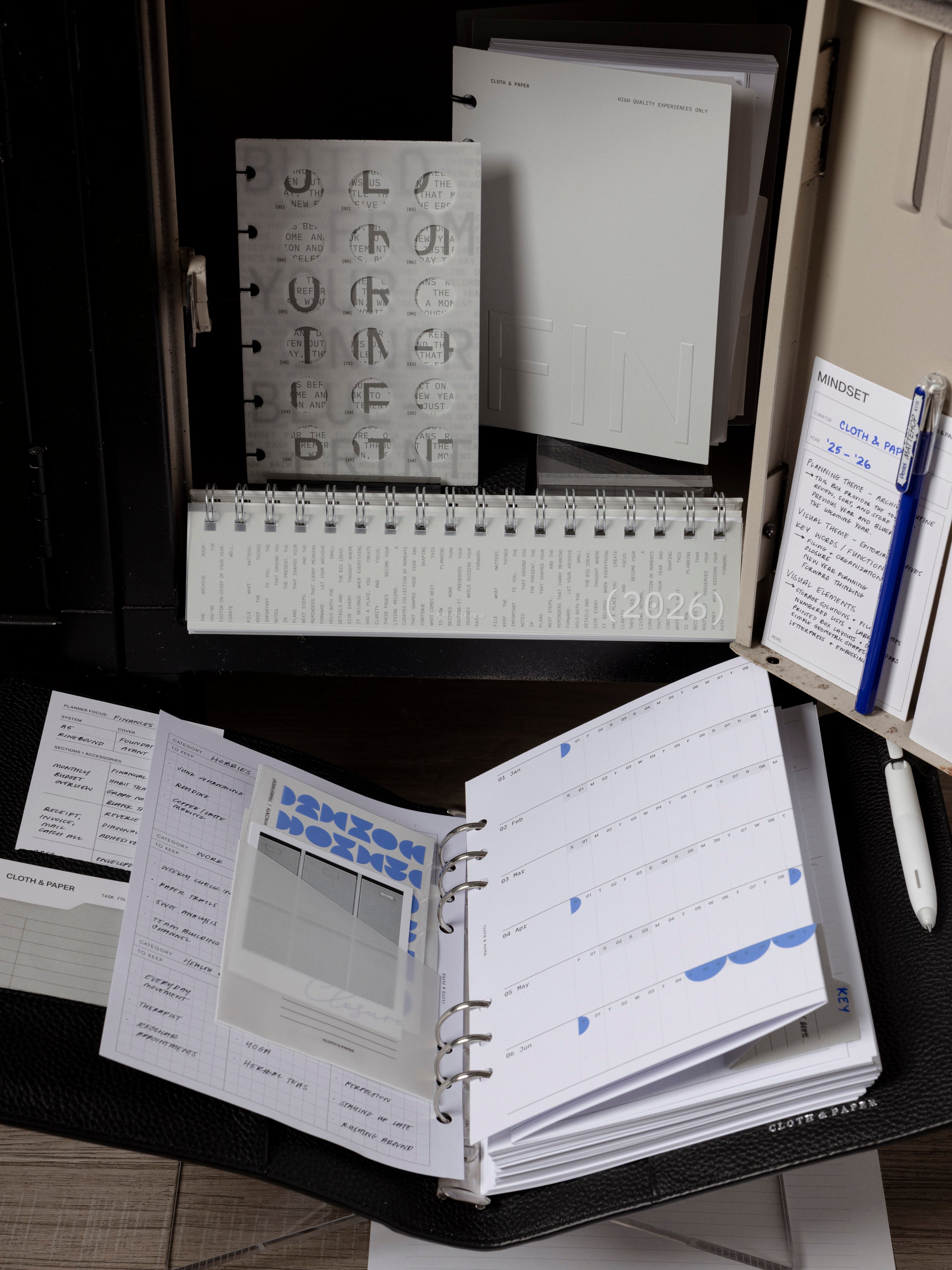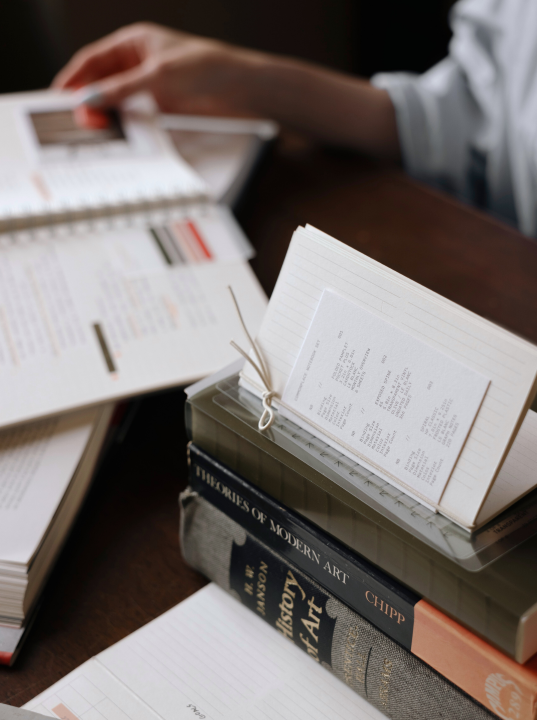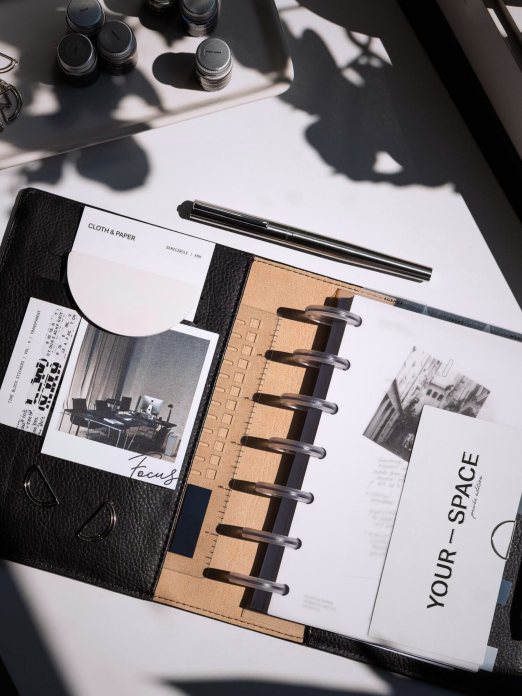The Dark Side of the To-Do List: Recognizing Toxic Productivity
We’ve talked before about finding joy in planning by romanticizing moments, or using your planner as a form of paper therapy. But what happens when all that structure turns into pressure?
There’s a fine line between being productive and the need to be constantly productive. You just crossed off 12 tasks and added 7 more to keep the momentum. And yet, somehow, you still feel behind. That little voice in your head whispers, "You have so much to do." What starts as a well-intentioned to-do list can quickly turn into a never-ending cycle of doing without ever truly feeling accomplished.
The irony is that, the more you push, the less you actually enjoy the results. The goal isn’t to stop planning altogether; it’s to shift from mindless hustle to mindful action. Because while we may not have all the time in the world, we do have the power to design days that feel fulfilling, not frantic.
Let’s talk about how to spot toxic productivity, and how to return to a healthier, happier way of planning.
What Is Toxic Productivity, Really?
At its core, toxic productivity is the compulsive need to do more, often at the expense of your well-being. (The scary part is it often disguises itself as dedication.) But over time, the cost becomes clear: exhaustion, guilt during downtime, and a lingering sense that you’re still behind.
We often label a day productive just by looking at the results. But here’s the kicker: while any kind of productivity might yield results, your wellness often becomes an afterthought. How long can you keep it up before you’re completely burned out?
However, a good kind of productivity doesn’t just give you results. It gives you mastery, growth, and the kind of confidence that makes you want to show up at your best. If you’re using planning tools on a daily basis, do a quick check-in: are they helping you feel grounded, or are they feeding the pressure to keep performing?
Sneaky Signs You Might Be in a Productivity Spiral
We see endless tips online about getting “more” done, but rarely do people talk about when those habits cross the line. And when they do, recognizing it in yourself isn’t always easy. Toxic productivity doesn’t always show up in obvious ways.
By the time it does, you might already be used to the constant tension of feeling like you're not “doing enough,” or the anxiety that creeps in on a slow day—wondering if you forgot something, or worse, trying to squeeze in a task just because.
I’m guilty of it, and I know a lot of people do it without even thinking twice. So I’ve put together a simple list of sneaky signs you might be stuck in the toxic productivity trap.
-
You feel guilty during breaks, even when you planned them.
No, you don’t need to "optimize" your break. That’s called still working. -
You end up adding more tasks, even when the activity holds no true meaning or purpose for you.
Even helping out can backfire when you're already running on empty. -
You push through fatigue with the belief that “no pain, no gain” or “I’ll adjust eventually,” as if burnout is something to train for.
You’re not Ash Ketchum. You don’t have to catch 'em all (or chase every deadline). -
You always give up finding the time to slow down.
This one is for anyone who has banked PTO at the end of every year and constantly utters the phrase "Someday I'll have time to travel/read/workout/sleep/etc.”
-
When a task is done, you check your list before you check in with yourself.
A moment of silence for my ego here; this one really hits home!
But of course, we’ll learn how to unlearn these habits and lean into healthier ways to get more stuff done.
How to Gently Unlearn Toxic Productivity in Your Planning
Recognizing that you might be operating from toxic productivity is already a meaningful first step. While awareness alone isn't enough, once that realization clicks, you're ready to begin the gentle process of unlearning the habit of constantly performing, and learning to simply be.
Before we can shift into a healthier workflow, we have to recognize what’s no longer serving us, understand where it’s coming from, and gently choose something better. The following affirmations and tools are designed to support us through this transformative process.
“I choose to pursue what builds me up from within. If it inspires others, that’s just a beautiful bonus of staying true to myself.”
This is where goal-setting starts to shift. Instead of measuring your worth by how full your schedule is, or how much you can achieve in a day, prioritize tasks that connect to what matters most to you. Our Goal Mapping Inserts help you make that distinction, organizing tasks around meaning and personal impact, not just deadlines or volume.
- You realize not every task on your list deserves the same amount of energy, so you start labeling them by impact, not just time.
- You stop saying yes out of guilt and start saying yes out of alignment.
- You allow 3 truly meaningful tasks to be enough for a day without apologizing for it.
"I deserve to rest and recollect, and this makes everything else possible."
This affirmation invites us to release the guilt that often creeps in when you're not actively doing something. Our 2026 Dated Planner Inserts help you physically block and protect white space in your schedule. Seeing those intentional breaks in ink helps rewrite the belief that busy equals worthy. You can try:
- Scheduling an unstructured afternoon once a week, no catch-up, no to-do list.
- Learning to leave some space empty in your planner (on purpose!), and feeling good about it.
If you're struggling to find downtime during the week, start small. Even 5-10 minutes of intentional pause every two hours (like stepping away from your screen, taking a few deep breaths, or simply looking out the window), can make a significant difference in your energy and focus. Remember, these aren't breaks from productivity; they're investments in it.
"I honor my energy as much as my output, because sustainability is a form of success."
Sustainable planning begins with paying attention to what drains and restores you. The Wellness Planner Inserts help track how tasks affect your energy, not just your time. Over time, this creates a map of what helps you thrive.
- You notice that even short social events leave you mentally tired, so you build in recovery time after.
- You realize certain kinds of work (like deep focus) are better for mornings, so you stop overloading your afternoons.
When you begin to notice your energy patterns, you learn to plan in a way that protects and restores you. The truth is, some things need you at your best, because no one else can do them quite the way you do.
"I build simple routines that support me over time, not just check things off a list."
Finally, we shift from the habit of rigid, demanding schedules to supportive rhythms. This often stems from a need for control or a fear of chaos. The Routine Builder Planner Inserts help design transitions that feel grounding rather than grinding.
Morning starts, work sessions, evening wind-downs—each becomes an act of self-care rather than another box to check. Imagine a morning routine that genuinely energizes you, or an evening wind-down that truly helps you disconnect. It's about designing your day with intention, so your habits become supportive anchors.
Give Yourself Permission to Pause
Some of your best ideas, and realizations come not when you're racing through your tasks, but when you're still. When you give your mind room to breathe and your body the care it deserves.
So take that deep breath. Step away from your checklist. Sit in the quiet. Even if it’s just five minutes between meetings or a morning without a plan, these small pauses remind you that you are a human being. And yes, doing less can be the most productive choice you make today.
A Planner Should Serve You, Not the Other Way Around
At the heart of it all, your planner is a tool. It was never meant to measure your worth or squeeze every drop of energy out of your day. It’s there to support you: to help you remember what matters, protect your time, and make space for a life that feels aligned, not just efficient.
Your value isn't measured by how busy you are. So as you move forward, let your pages hold more than just tasks. Let them reflect your energy, your dreams, your growth. Let them remind you that you’re allowed to reset as many times as you need to.
Ready to plan from a place of intention? Take a moment today to revisit your planning routine or explore our planner essentials designed to support your rhythm.











2 comments
Absolutely wonderful advice. I need a sticky note at the top of my planner, reminding me that my planner serves me…not the other way around. Check!
Kimberly Albarelli
This blog was perfect, because I have been putting myself under pressure on how to best use my planners. I feel wasteful when I am not utilizing all of them everyday. I need to plan with intention and plan and take breaks. I have been focused on filling every page and that is so unnecessary. Thanks – My planner is to serve me not the other way around.
Ramona Taylor
Leave a comment
This site is protected by hCaptcha and the hCaptcha Privacy Policy and Terms of Service apply.